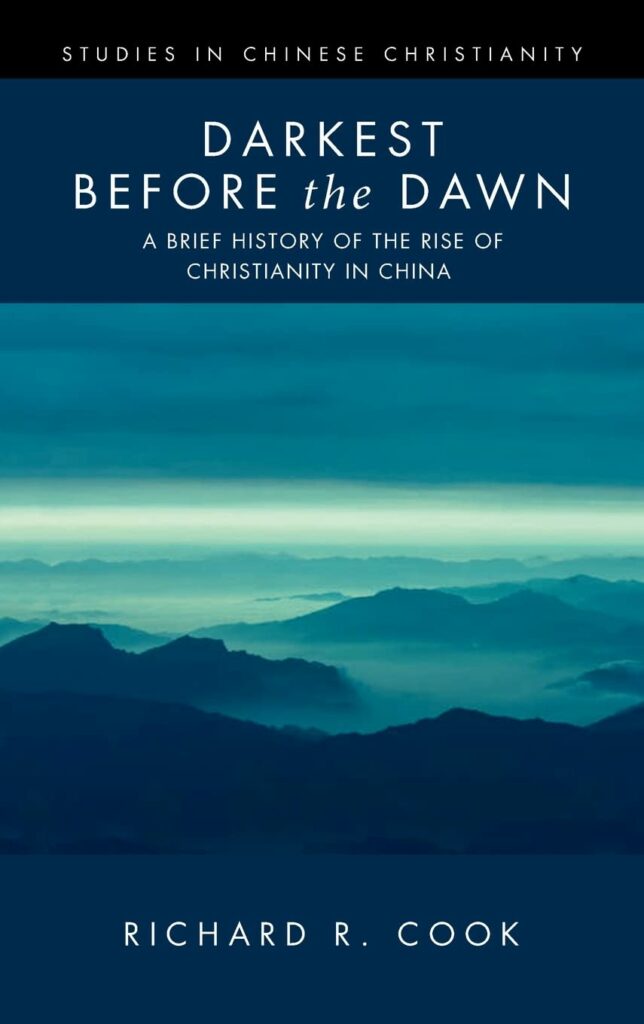Darkest before the Dawn

作者:柯立天博士(Richard Cook)/ 教會歷史與宣教學副教授、跨文化研究碩士科主任
I am delighted to complete this book, and I am deeply indebted to the Logos community. I have been teaching Chinese Church History at Logos for over ten years, and each semester I learn from my students. I owe many of the ideas in this book to current students and myriad alumni. Before coming to LES, I also taught the material at several other institutions including in Taipei, San Jose, Paris, Moscow, and during my eight years on the faculty at Trinity Evangelical Divinity School in Chicago.
My fear, as a history teacher, is that history can seem boring. Therefore, I listen carefully and adapt the lectures each semester according to the interests and passions of the students. The richest conversations I have had in a seminary classroom often revolve around Taiwan, China, and Chinese history, topics close to the hearts of the students. Not only do I get to know and love my students, but I constantly grow in my comprehension of the subtle nuances of China and Chinese culture.
More than a retelling of Chinese Church History, Darkest before the Dawn offers my particular take on: Nestorian converts, Jesuit virtues, Morrison’s archetype, Opium and Taipings, CIM’s testament, China’s rush to Christian civilization while rejecting Christ, Wang Mingdao’s resolute indifference to Western missions, the dark Great Leap Forward and Cultural Revolution years, the revivals of evangelical Chinese Christianity, and finally Chinese Christians finding footing on the global stage.
The center of the story, as I envision Chinese church history, is the emergence of the independent churches between the 1920s and 1950s. One key figure during that era was Wang Mingdao (1900-1991), the subject of my Ph.D. research and dissertation. He is part of the pivotal generation of Chinese Christians, marking the transition away from missionary endeavors in China toward the development of an independent and indigenous Chinese Christianity.
The epic missionary effort of the nineteenth century resulted in the establishment of a small and untried Chinese church. In a tragic twist, at the same time, the Chinese people were increasingly antagonistic toward the West, imperialism, and Christianity, and the foothold of church was tenuous.
Then, in 1900, uneducated peasants rained deadly violence upon the missionaries and Chinese Christians during the Boxer uprising. In a second, more potent, blow, the intellectuals of the anti-Christian movement in the 1920s denunciated Chinese Christians as Western tools undermining Chinese nationalism and culture. Once inside the “Bamboo Curtain” after 1949, would Christianity survive? Or would it disappear again, as it did after both the Tang Dynasty and the Yuan Dynasty?
The church took root during the generation of Wang Mingdao. He was born in 1900 in Beijing during the Boxer uprising, he was almost 19 years old on May 4, 1919 (in the book I discuss whether the young Wang Mingdao joined his classmates at the demonstrations in Tiananmen Square), he was in his 20s during the May Fourth Movement, he was in his 50s during the early years of the Chinese Communist Party, and, after many years of imprisonment, he died in 1991 as the Chinese economy was taking off. Twentieth century Chinese church history comes alive when viewed from his eyes.
The miraculous trajectory of the church since the 1980s is described in the final chapter. My first visit to China was in 1982, and I have witnessed firsthand the dramatic transformation of both China and the church over the past four decades. I close the book with my personal observations and modest proposals for the future of the church.
One commentator on Darkest before the Dawn remarks, I hope correctly, that the narrative “skillfully weaves together the historical and theological threads that make up the story of Christianity in China, bringing this story to life and inviting the reader into the lives of Chinese Christians through the centuries.”
“The Christian church was always destined to find its way to China. Long before the birth of the church, China existed, coalescing around profound philosophical concepts and powerful cultural symbols. It developed into a dynamic and enduring civilization. In time, Christian missionaries arrived on its shores, driven to bring the gospel to these people. This book starts with the story of that journey: the arrival of the missionaries who planted the seeds of the gospel in Chinese soil. As the seed sprouted and grew, a new story of a unique and distinct Chinese church began. The epic narrative opens from the uncertain beginnings in darkness, passes through intense hardship and years of struggle, and culminates with the triumphal emergence of the Chinese church from the shadows into the light of the global stage.”
